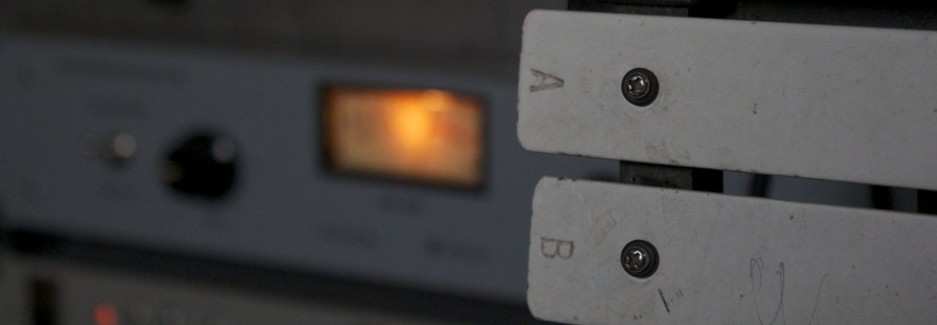When using more than one microphone to capture a complex sound wave like the one generated by musical instruments, the relative position of microphones determines which frequencies are being picked up in phase and which are being picked up out of phase.
Phase is frequency dependent.
This is one extremely important aspect to be taken into consideration when using more microphones and therefore dealing with potential phase issues.
But… before getting into more detail about this aspect, let’s first analyze the differences between microphones.
Because microphones don’t listen all in the same way.
Condenser microphones
In order to translate air pressure into electrical signal, the capsule of condenser microphones is made of an extremely thin disc called diaphragm (usually a disc, although square-shaped diaphragms have been seen on the market). Said diaphragm is usually made of plastic material such as mylar and sputtered with a very thin coat of gold alloy and it is the element exposed to sound pressure variations. Behind the diaphragm, after an air gap, is placed a fixed plate, aptly named backplate. The two elements, diaphragm and backplate, are electrically charged and the whole system effectively behaves like a capacitor (condenser is an old term for capacitor), utilizing the variation of capacitance between diaphragm and backplate (caused by the oscillation of the former when hit by sound pressure) to generate alternate output voltage.
The higher the sound pressure, the more the diaphragm is being pushed towards or pulled away from the backplate; therefore the more the capacitance is varied and the higher the amplitude of the output voltage.
With a condenser microphone, the level of the signal is directly proportional to the air pressure: the higher the sound pressure, the higher the output voltage.
Moving coil microphones
Similarly to condensers, also in dynamic capsules a diaphragm is present. In this case, attached to the diaphragm is a coil of thin copper wire. Said coil of wire is surrounded by a fixed magnet. According to the principles of electromagnetic induction, voltage is induced on the coil when it moves (remember: it’s attached to the diaphragm) and interferes with the magnetic field emanated by the magnet. Note that movement is the necessary condition for voltage to be induced on the coil: without movement, there is no output signal. What you must understand here is that any diaphragm stops moving at the highest sound pressure (or de-pressure) and therefore a moving coil microphone’s output voltage is absent exactly when the output of a condenser microphone is at full swing! Conversely the highest output is provided at the highest speed of movement of the moving coil’s diaphgragm, in between two opposite peaks of sound pressure. And that exactly happens when there’s no pressure on the diaphragm: exactly when the output of a condenser microphone is at zero.
With a moving coil microphone. the level of the signal is inversely proportional to the air pressure: the higher the sound pressure (or de-pressure), the lower the output voltage.
Ribbon microphones
Ribbon microphones operate in a similar fashion, also according to the principles of electromagnetism. A conductive metallic element forged as a very thin ribbon is kept under tension, free to oscillate in between the two poles of a magnet and connected to the output pins. Voltage is present at the output pins when the ribbon, hit by air pressure, moves within the magnetic field and in doing so gets voltage induced onto itself. Exactly like a dynamic capsule (the principle is the same), the movement of the ribbon is the necessary condition for voltage to be present at the output: also with ribbon microphones the output level is inversely proportional to the pressure on the diaphragm.
Let’s categorize moving coil and ribbon microphones as electromagnetic microphones.
Following what’s been said above, let’s plot the output of a condenser microphone and the output of an electromagnetic microphone as the same sound pressure varies on their diaphragms: we’ll obtain two resulting waveforms which are 90° out of phase.
When placed coincidents, the output signal from an electromagnetic (green) is 90° “ahead” of the output signal from a condenser (red). Or, if you prefer, it is one quarter of wavelength ahead of phase. This means that if condensers and moving coils or condensers and ribbons are involved together in a sound take, you won’t be able to manage phase issues without taking into account this constituent phase displacement.

